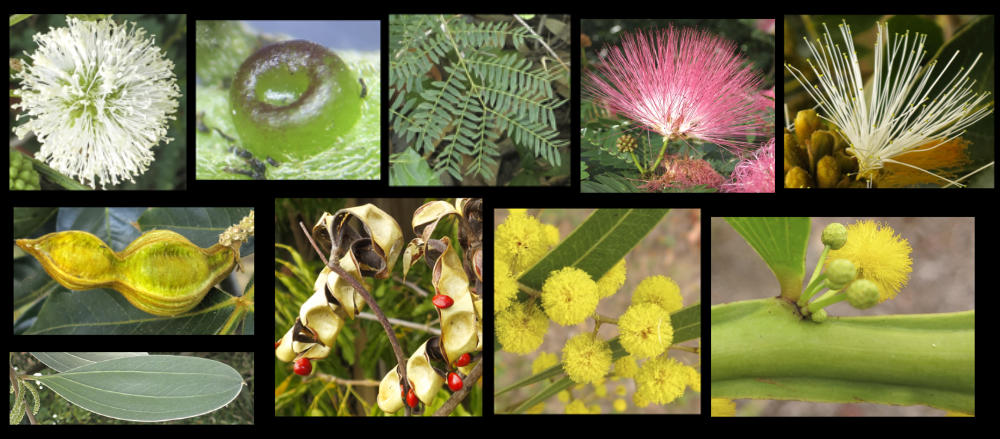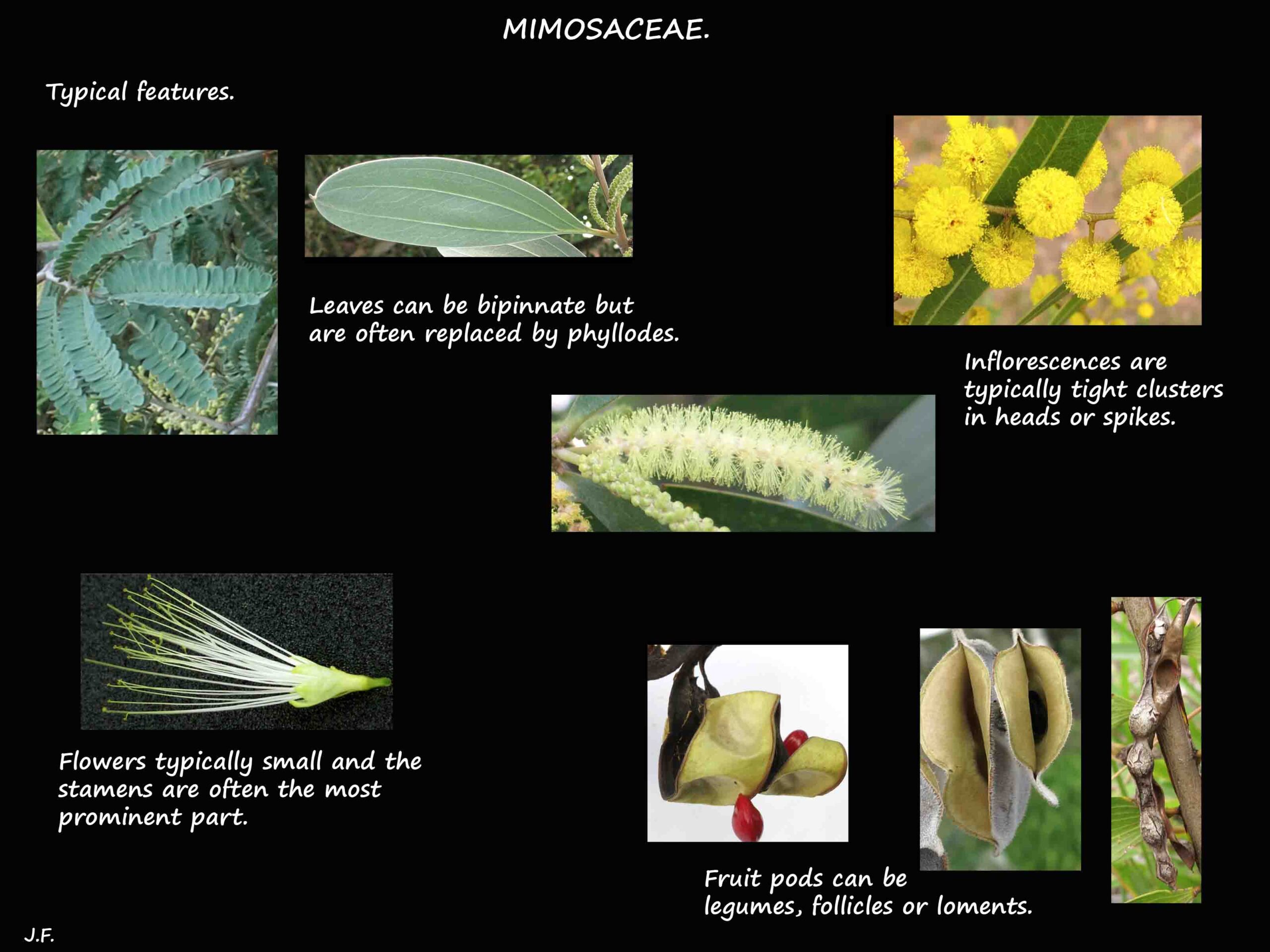Mimoscaeae family.
This is equivalent to subfamily Mimosoideae in a loosely defined family Fabaceae.
There are around 65 genera (60 – 78) with about 3200 species.
Most species are in Acacia (over 600) and Mimosa.
Australia has around 12 native and 4 naturalised genera with 930 species.
S. E. Queensland has 9 genera and 137 species.
Well known genera include Acacia, Albizia, Adenanthera, Calliandra, Leucaena and Mimosa.
Most are trees or shrubs with some climbers and rarely herbs.
The alternate leaves are arranged in a spiral or in 2 ranks.
They are large to small and with or without a petiole.
There is usually a swelling at the base of the petiole – a pulvinus.
There are almost always stipules but they may fall off after a time.
Between the petioles, they can be leafy, scaly, a gland or a spine.
Leaves are sometimes compound – mostly bipinnate with opposite leaflets.
A large number of species have simple leaves in the form of phyllodes.
These are modified petioles that can photosynthesise.
Phyllodes can be wide or narrow and flat or cylindrical.
They have 1 or more parallel veins.
Some species have bipinnate juvenile leaves and phyllodenous adult ones.
Leaves often have small extra-floral nectaries on the petiole or on the midrib and petiolules.
Hairs of various types may be present.
Inflorescences can be terminal, axillary or on bare wood.
They are mostly dense heads or spikes but occasionally a solitary flower.
The usually small flowers have parts in 4’s or 5’s.
Mostly regular they can be slightly irregular but are never pea-like.
The usually bisexual flowers may or may not be on a stalk.
The 5 (3 – 6) sepals are usually free but may be partly fused.
The 5 (3 – 6) small, inconspicuous petals can be free or basally fused.
Many are yellow or white while others are pink, red, green or purple.
There are around 5 or many stamens that are free or fused into a tube.
They are often long, brightly coloured and the most conspicuous part of the flower.
The stamens may be of different lengths and some may be staminodes.
The dorsifixed anthers open inwards via long slits.
Some have a very small, apical gland.
There is usually only a single carpel but there can be up to 16.
Sometimes it is on a stalk or gynophore.
There are 2 to many ovules with marginal placentation.
The fruit are mostly dry, dehiscent legumes or loments with some follicles.
J.F.



